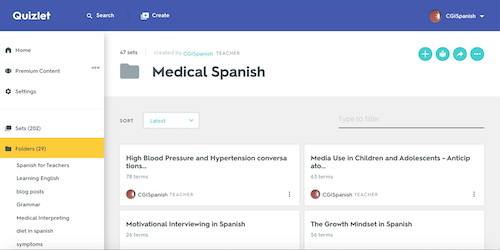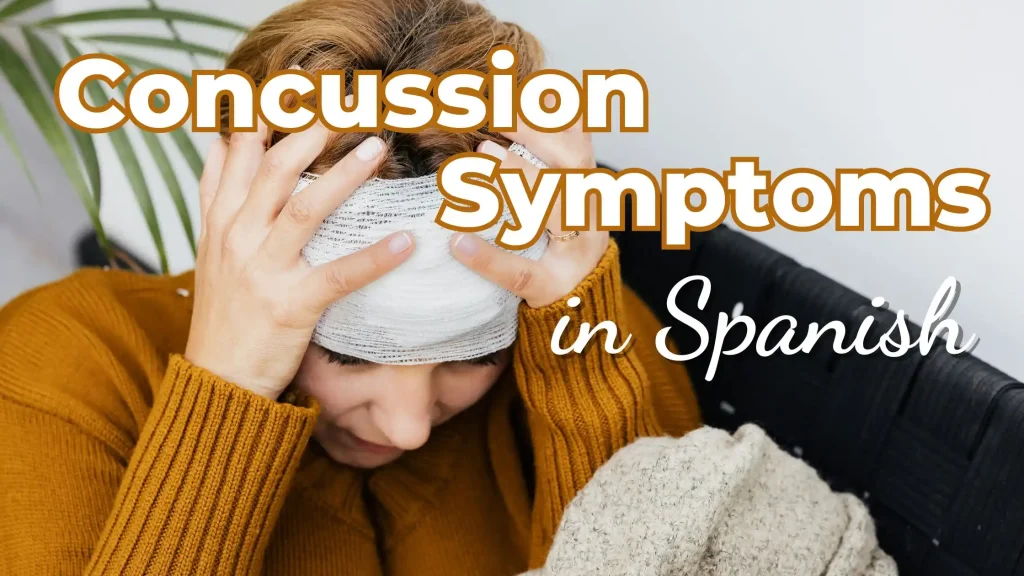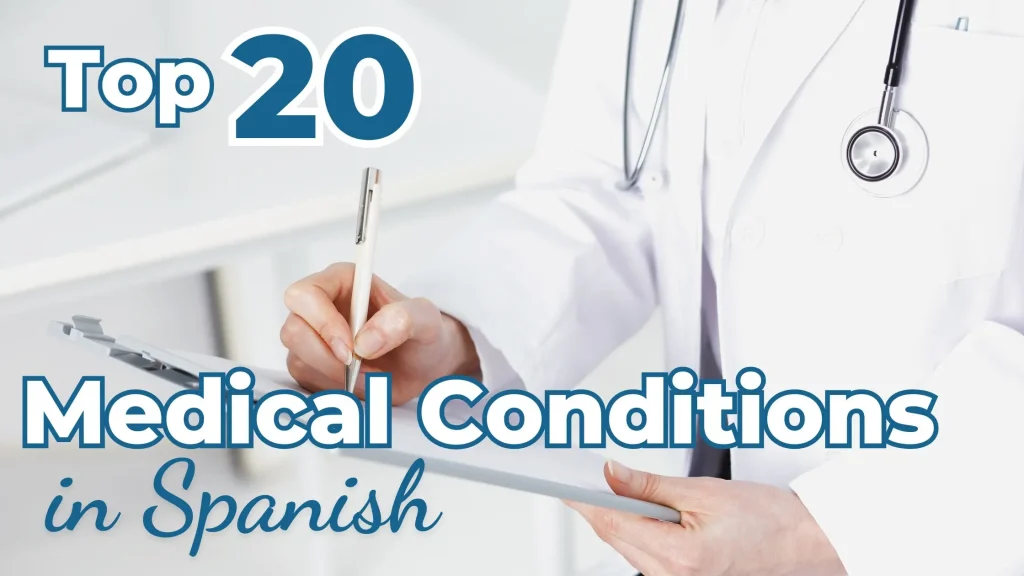Verbs are the glue that stick all of your Spanish vocabulary together and allow you to string together complete thoughts in Spanish. In this lesson you will learn 192 essential verbs for Spanish communication in clinical settings.
Here is the 192 Must-Know Spanish Verbs for Healthcare lesson that I taught to the Facebook group:
Subscribe to our YouTube Channel to see all of our lessons and get the latest videos right away!
In this free medical lesson you will learn:
- 103 most common verbs in Spanish: verbos generales pero súper comunes. You probably learned the majority of them in your high school or college Spanish class, so today we are focusing on the meaning of these verbs (not necesarily in their conjugation)
- 90 Clinical Verbs in Spanish: or verbos para la clínica. These verbs are super useful for the clinic because you will be able to express specifics ideas and actions. You don’t usually learn these verbs in your general Spanish class so you will boost your medical vocabulary and I am sure your patients will appreciate it! 🙂
How to Study and Effectively Learn Spanish Verbs
Regardless of where you work in the clinical setting, you always have to pick up some verbs and learn some verb tenses to communicate better with your patients. That’s the reason why we have selected 192 common Spanish verbs for healthcare so that you will be able to learn them and use them right away.
Steps to Learn these 192 Spanish Verbs
There is a lot of information to learn so you need to break it down into steps.
Step 1: Learn Verbs Spanish > English: This is usually the easiest way to study as you recognize similar words and cognates.
Step 2: Learn Verbs English > Spanish: When you go from English to Spanish, you are working on your ability to express yourself and conversely when you go from Spanish to English, you are working on your ability to listen to someone saying something and comprehend it. This is because English is your reference point.
Three Learning Techniques
1. Old School Technique: Fichas

Just create some fichas or flashcards and put the Spanish verb on one side and the English meaning on the other side.
2. Cheapskate Technique: Papel (de renglón angosto)

You just want to steal a college-ruled page from a notebook, fold it in half and then add the Spanish verbs in one half and their English equivalent in the other.
The objective is not to see both the English and the Spanish verbs at the same time because you will not test your knowledge if you are able to see the words.
3. Siglo 21 Technique: Quizlet

Quizlet is an online learning platform where we have uploaded several study sets. You just have to go to Quizlet and start studying the Spanish verbs there 🙂
The good thing about Quizlet is that you can study using different features such as Learn, Write, Spell, Flashcards, Test, Match, and Gravity. You can try each of these features until you find the one that fits your learning needs.
The Rule of 30 – La Regla de 30
The rule of 30 or Regla de 30 is so simple:
- Select 30 verbs.
- Study them for 30 minutes 3 times a week.
You probably nail this set of verbs just after two sessions of 30 minutes or even in just one session. The idea is dividing the verbs into groups of 30 verbs each, learn them from Spanish to English and vice-versa and then go on for the next group.
Next Steps After Learning Spanish Verbs
Once you learn all these 192 Spanish verbs, there are some steps to take in order to incorporate them on your conversations with your patients:
1. Focus on the fast conjugation for the most important verbal tenses:
The most important verbal tenses for you to learn are:
- Presente: once you learn the present tense, you are able to learn two other useful tenses for the clinic setting:
- Imperativo: this is the command tense.
- Futuro: this is the future tense or at least the most common one that the majority of Spanish speakers use. It is built using a combination of the verb “Ir” (to go), the conjunction “a” and an unconjugated verb, you that you obtain: Yo voy a comer, usted va a hablar, él/ella va a salir, etc.
- Pretérito: The preterite past tense.
- Imperfecto: The imperfect past tense.
- Perfecto del Presente: This is the present perfect tense, which is used to talk about past events that are still valid in the present.
- Pretérito Perfecto: This is the past perfect tense.
With these seven tenses, you could do almost anything you need to in the clinical setting in Spanish.
2. Practice the Conjugations:
You can poke around on our blog or in our YouTube videos and you can see how to do all these tenses and get lessons for all these tenses; but for practicing the conjugations, we recommend:
- Get two wooden dice from Hobby Lobby
- On one dice, put all the subjects in Spanish on each side of the wood of it.
- On the other dice, put some common tenses that you want to study
- Roll them both at the same time, go to your list of Spanish verbs and start practicing the conjugations right away!
Let’s start with 103 of the most common verbs in Spanish:
Acabar to finish
Aceptar to accept
Andar to walk
Aprender to learn
Ayudar to help
Bailar to dance
Beber to drink
Buscar to look for
Caber to fit
Caerse to fall
Cambiar to change
Caminar to walk
Cancelar to cancel
Cantar to sing
Comer to eat
Comprar to buy
Conducir to drive
Conocer to know (ppl/place)
Contar (o-ue) to count
Contestar to answer
Correr to run
Cortar to cut
Creer to believe
Dañar to hurt, to harm
Dar to give
Deber to owe
Decir (e-i) to say
Dejar to leave
Desear to wish
Dibujar to draw
Doler(le) (o-ue) to hurt
Dormir (o-ue) to sleep
Empezar (e-ie) to start
Emerger to emerge
Encontrar (o-ue) to find
Enseñar to teach
Escuchar to listen
Esperar to wait for
Estar to be
Estudiar to study
Explicar to explain
Guardar to keep
Gustar to like
Haber* to have/to be
Hablar to speak
Hacer to make
Herir (e-ie) to injur
Ir to go
Jugar (u-ue) to play
Lavar to wash
Leer to read
Limpiar to clean
Llamar to call
Llegar to arrive
Llenar to fill
Llevar to carry, wear
Llorar to cry
Manejar to drive, manage
Mirar to look
Mostrar (o-ue) to show
Necesitar to need
Oír to hear
Olvidar to forget
Pagar to pay
Pasar to pass
Pedir (e-i) to request
Peinar to comb
Pensar (e-ie) to think
Perder (e-ie) to lose
Poder (o-ue) to be able to
Poner to put
Preguntar to ask
Prestar to lend, loan
Quedarse to stay
Quejarse to complain
Querer (e-ie) to want
Reparar to fix, to repair
Romper to break, tear
Saber to know
Sacar to take out
Salir to go out
Seguir (e-i) to follow
Sentirse (e-ie) to feel
Ser to be
Soñar (o-ue) to dream
Surgir to arise
Tener (e-ie) to have
Terminar to finish
Tocar to touch
Tomar to take
Toser to cough
Trabajar to work
Traer to bring
Usar to use
Valer to be worth
Vender to sell
Venir (e-ie) to come
Ver to see
Vestir (e-i) to dress
Viajar to travel
Vivir to live
Volar (o-ue) to fly
Volver (o-ue) to return
Now let’s look at a few clinical verbs in Spanish:
Abrir to open
Acordar (o-ue) to remember
Acostar(se) (o-ue) lie down/go to bed
Aguantar to bear/tolerate
Amamantar to breastfeed
Apoyar to support
Asistir to be present
Atender (e-ie) to assist
Auscultar to listen stethoscope
Ayunar to fast
Bajar de peso to lose weight
Bajar(se) to lower/get down
Bañar(se) to bathe (oneself)
Blanquear to bleach
Causar to cause
Cepillar(se) to brush
Cerrar (e-ie) to close
Chequear to check
Cocinar to cook
Comenzar (e-ie) to begin
Comprender to understand
Consumir to consume
Correr to run
Cuidar to care for
Curar to cure
Decidir to decide
Depender de to depend on
Descansar to rest
Descubrir to discover
Despertar(se) (e-ie) get up/wake up
Detectar to detect
Discutir to discuss
Distinguir to distinguish
Doblar to bend/fold
Duchar (se) to shower
Durar to last
Elegir (g-j) (e-i) to choose
Empeorar to worsen
Empujar to push
Entender (e-ie) to understand
Entrar to enter
Escoger to choose
Escribir to write
Estirar to stretch
Examinar to examine
Exhalar to exhale
Extender(e-ie) to extend
Firmar to sign
Fracturar to fracture
Frotar to rub
Fumar to smoke
Grabar to record
Hinchar to swell
Inflamar to inflame
Inhalar to inhale
Insistir en to insist on
Jalar to pull
Levantar(se) to raise/get up
Llamar(se) to call
Llevar to take with/carry
Magullar to bruise
Mejorar to improve
Morder (o-ue) to bite
Morir(se) (o-ue) to die
Mover(se) (o-ue) to move/oneself
Ordenar to order
Orinar to urinate
Palpar to feel/ palpate
Pesar to weigh
Picar to bite/prick/sting
Preparar to prepare
Prohibir to prohibit
Quebrar to break
Quitar(se) to take away/off
Recetar to prescribe
Recibir to receive
Regresar to return
Resistir to resist
Respirar to breath
Responder to respond
Sangrar to bleed
Sentar(se) (e-ie) to sit/sit down
Señalar to point out/show
Subir to go up, get up/on
Sudar to sweat
Sufrir to suffer
Temer to fear
Torcer (c-z) (o-ue) to sprain
Tragar to swallow
Verificar to verify/check
Visitar to visit
Su tarea – Your Homework
- Review the notes & vocabulary
- Identify additional points and topics to discuss with patients
- Let me know if you need help 🙂
- Remember to keep it simple if you need to
- Ask for help in the comments below
- Give it a try with your patients!
I packaged all of these verbs into some flashcards for you to study – study your medical Spanish verbs here!
I packaged all of this into easily downloadable .pdf notes–Get your copy for free today!
Free Medical Spanish Terminology Test
If you want to do a free Medical Spanish terminology test head over to certified Spanish, we are currently building a certification platform where you can practice this test for free. You just have to create a free user account here and start practicing your Español Médico 🙂
Keep up the good work speaking responsible Spanish to your patients! Check out our other books, classes & products to help you learn medical Spanish!
*If the link isn’t working for you, you may need to unblock pop-ups in your browser settings






the link is broken
Sorry about that Cora, just fixed it. Here is the link to the post for the download: https://commongroundinternational.com/medical-spanish/192-must-know-spanish-verbs-for-healthcare/